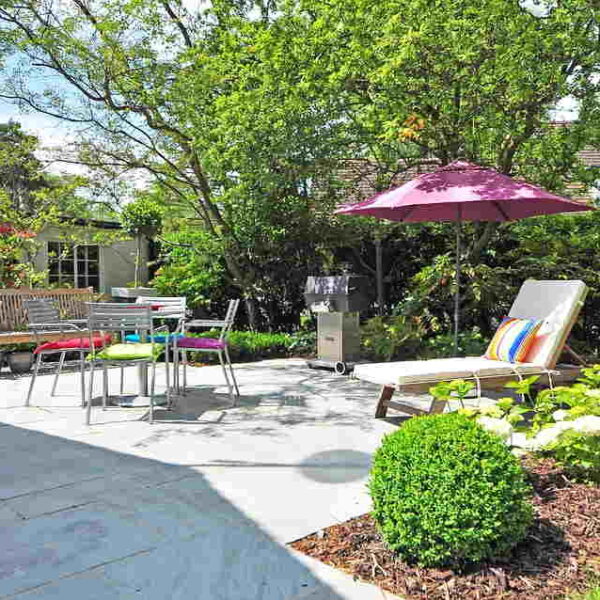Assisted living is evolving rapidly, driven by advances in technology, shifting demographics, and changing expectations for elderly and disabled care. With an aging population and increased focus on independence and quality of life, the sector is embracing cutting-edge solutions that enhance comfort, safety, and engagement.
In this blog, we’ll explore key innovations and trends shaping the future of assisted living.
Smart Home Technology for Assisted Living
One of the most significant changes in assisted living is the integration of smart home technology. Automated systems now allow residents to control lighting, temperature, and security with voice commands or mobile devices.
Smart sensors can detect movement and alert caregivers in case of falls, while AI-powered assistants help with daily tasks, medication reminders, and emergency alerts. These innovations provide both convenience and safety, reducing the need for constant supervision while enhancing residents’ independence.
Home care services offer individuals the comfort of receiving professional support in their own homes, helping them maintain independence while ensuring their health and well-being are carefully managed.
AI and Robotics in Caregiving
Artificial intelligence and robotics are transforming caregiving by providing personalized and responsive assistance. AI-driven monitoring systems can analyze health data to predict potential issues before they become emergencies.
Robotics, on the other hand, are being used for tasks such as mobility assistance, lifting patients, and even companionship. Social robots are gaining popularity in assisted living communities, offering interactive engagement and reducing loneliness among residents.
Telehealth and Remote Monitoring
Telehealth has revolutionized healthcare access for assisted living residents, making it easier to receive medical consultations without leaving home. Video appointments with doctors, remote monitoring of vital signs, and AI-assisted diagnostics reduce the need for frequent hospital visits.
This shift enhances convenience for residents while alleviating the burden on healthcare facilities. Additionally, wearable health devices, such as smartwatches that monitor heart rate and oxygen levels, allow caregivers to track well-being in real-time.
Customizable and Flexible Living Spaces
The future of assisted living also involves a move toward more personalized and adaptable living environments. Modular housing solutions and customizable floor plans cater to individual needs, whether for mobility assistance or privacy preferences.
Universal design principles, including wider doorways, zero-step entries, and accessible kitchens and bathrooms, are becoming standard in new developments. These features help residents maintain their independence and feel more at home.
Community-Based and Intergenerational Living
Rather than isolating elderly or disabled individuals in traditional care homes, a growing trend is to create inclusive, community-based living spaces. Some assisted living communities now integrate different generations, encouraging interaction between older adults, young professionals, and even students.
This intergenerational model fosters social engagement, mental stimulation, and emotional well-being. Additionally, co-housing and senior-friendly urban developments ensure that residents remain connected to the wider community rather than being confined to specialized facilities.
The Role of Sustainable and Eco-Friendly Design
Sustainability is playing a greater role in assisted living developments. Green building materials, energy-efficient appliances, and renewable energy sources are becoming common in care facilities.
Sustainable designs not only reduce the environmental impact but also create healthier living spaces by improving air quality and natural lighting. Many assisted living communities are also incorporating gardens, green spaces, and wellness areas to enhance residents’ quality of life.
The Future of Mobility and Accessibility
Advancements in mobility aids and accessibility solutions are making assisted living more comfortable and inclusive. Next-generation wheelchairs with smart navigation, stair-climbing capabilities, and AI-driven controls provide enhanced independence.
Meanwhile, exoskeleton technology is helping individuals with mobility impairments regain movement, reducing reliance on traditional mobility aids. Public spaces and transportation systems are also evolving to be more accessible, ensuring that assisted living residents can participate in social and recreational activities with ease.
Personalization Through Data and AI
Big data and AI are shaping personalized care plans in assisted living. By analyzing health records, behavioral patterns, and preferences, AI-driven platforms can create customized routines, diet plans, and exercise programs.
This level of personalization ensures that residents receive care tailored to their specific needs rather than a one-size-fits-all approach. Predictive analytics also help caregivers identify early signs of health deterioration, allowing for timely interventions and better long-term health outcomes.
Addressing Mental Health and Well-Being
Big data and AI are revolutionizing personalized care in assisted living environments by analyzing comprehensive data such as health records, behavioral patterns, and personal preferences. This enables AI-driven platforms to create customized routines, nutrition plans, and exercise regimens tailored to each resident’s unique needs.
One of the most impactful advancements is AI’s predictive capability to identify individuals at higher risk for specific health events. For example, the system will possibly be able to detect residents at increased risk for falls, prompting the facility to implement preventative measures, such as providing Life Assure mobile medical alert devices to vulnerable residents.
In addition to technological advancements, creative engagement is playing a vital role in enhancing residents’ emotional well-being. Incorporating art in assisted living has been shown to improve cognitive function, alleviate stress, and foster a sense of community among residents. Whether through painting, music, or other creative outlets, artistic expression provides meaningful opportunities for connection and personal fulfillment.
Heart Health Innovations in Assistant Living
Innovative technologies are transforming heart health care in assisted living communities. Wearable devices now track heart rate and blood pressure in real-time, allowing for early detection of potential issues. Telehealth services also make it easier for seniors to consult with specialists and manage their heart health remotely. In addition, digital support tools like a healthcare virtual assistant can help streamline communication between patients and providers, manage appointment scheduling, and ensure timely follow-ups. These tools not only improve care coordination but also reduce the administrative burden on staff, allowing them to focus more on direct patient care.
Beyond technology, assisted living facilities are prioritizing heart-healthy diets and tailored exercise programs. Nutrient-rich meal plans and low-impact fitness routines help seniors maintain cardiovascular health. For those looking to improve their wellness, a senior heart health guide can provide practical tips on diet, exercise, and lifestyle choices. As assisted living continues to evolve, these innovations ensure seniors can enjoy healthier, more active lives.
The Impact of Policy and Funding
As assisted living evolves, policies and funding models must adapt to support these innovations. Governments and private organizations are investing in new care models that prioritize home-based care and technology-driven solutions.
Insurance providers are also expanding coverage for telehealth services and smart home adaptations. However, affordability remains a challenge, and ensuring equitable access to these advancements will be a key focus for the future.
Conclusion
The future of assisted living is centered around innovation, personalization, and inclusivity. Smart technology, AI-driven care, and sustainable design are reshaping the way elderly and disabled individuals receive support, allowing for greater independence and improved quality of life.
As the sector continues to evolve, embracing these trends will be essential to meeting the needs of an aging population while ensuring that assisted living remains dignified, engaging, and accessible.






